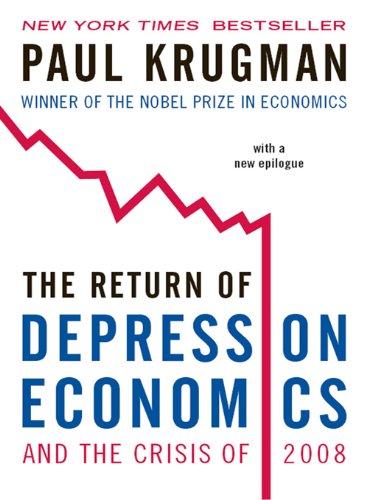Ghost Work: How to Stop Silicon Valley from Building a New Global Underclass, Mary L. Gray and Siddhart Suri, Houghton Mifflin Harcourt, 2019, pp. 254 + xxi, ISBN 978-1-328-56624-9
During the latest hearing of Mark Zuckerberg, the CEO of Facebook, in the Congress, Representative Katie Porter of California, dared the billionaire to spend an hour a day for a year moderating Facebook’s content. She reminded him that Facebook employs about 15 thousand contractors who are tasked with removing offensive, disturbing, and gory posts that often involve the worst excesses of humanity: stabbings, killings, and child pornography, to name a few. These contractors are sourced from and perform their duties in the Global South, for paltry salaries and no respite from the trauma they face daily. Well, other than the 9 minutes of ‘supervised wellness time’ per day. The people who reap the benefits of their work are not just the users, but the owners as well, who cash in inordinate amounts of wealth. Since Facebook debuted on the New York Stock Exchange in 2012, Zuckerberg’s wealth increased $1 billion per year on average.
Facebook is not the only website that employs an army of content moderators to intervene when the algorithm falls short. In fact, most applications and software would push tasks such as content moderation, image captioning, spell checking and labelling through to numerous platforms that facilitate piece-meal work. Independent workers would connect to the platform and perform the tasks for which they are paid, often close to nothing. This type of work is what Gray and Suri call ‘Ghost Work,’ namely, the “human labour powering many mobile phone apps, websites, and artificial intelligence systems.” Given that many programs fall short of full automation, they have to rely on human input to improve their intelligence, to feed the knowledge to the AI. Of course, those fortunate enough to find employment in one of the Big Tech companies are not going to perform such work. It will be given to others.
Gray and Suri focus their work on four such platforms that connect companies and contractors: Amazon Mechanical Turk (MTurk), Microsoft’s Universal Human Relevance System (UHRS), LeadGenius and Amara. They analyze workers performing tasks on these platforms in the US and India. Throughout, MTurk and UHRS are grouped in the categories associated with bad practices, whereas LeadGenius and Amara are examples of the good.
MTurk and UHRS tend to atomize and make those working on their platforms anonymous. The workers perform their tasks from their home, which cuts them off from the physical space within which they can socialize with others, and they are represented by a number, which strips them from their identity. However, the latter may also be empowering, if the context within which it occurs marginalizes particular identities, such as the disabled, or those belonging to minorities. These platforms constantly push tasks and given the sheer number of people present on it, good-paying work gets snatched up immediately. The workers must then be hypervigilant and always plugged in, leaving them no time to perform other duties alongside. They must be at the office all the time, if you will. They perform this work as independent workers, and as such, don’t benefit from any social security and other benefits a full-time employee might. Likewise, they spend hours sifting through mini gigs that are performed in seconds, with no prospects of advancing their careers within the company. These platforms often don’t have a set minimum wage. For example, MTurk’s minimum is a single cent per task. Joan, one of the workers the authors interviewed, is “one of MTurk’s top 4% of workers who are lucky enough to earn more than $7.25 an hour completing tasks.” Only workers in the US and India are paid in hard currency for their work, whereas the rest receive Amazon gift cards, which doubly benefits Amazon.
Platforms such as MTurk and UHRS disproportionately benefit the requestor, who, if not satisfied with the job performed, can simply reject it and refuse to pay the worker. The worker, on the other hand, has no recourse or ways to challenge the decision. The requestor describes what is needed, but offers no help to those who take up the task, who are left to figure it out for themselves. If the requestor is not satisfied with their performance, or if the worker realizes that they cannot complete the task because they are not qualified for it, the worker’s reputational score lowers, which makes it more difficult for the worker to find better-paying tasks, as those are vetted by the requestor.
In contrast to corporate centric platforms, Gray and Suri offer examples of LeadGenius and Amara. LeadGenius is a platform that’s used to provide targeted sales leads, while Amara is a nonprofit startup dedicated to translating and captioning content for audiences and people with hearing disabilities. They represent starkly different business models, worker-oriented and fostering a healthier work culture. At first, Amara was entirely volunteer-led, with people dedicating their time to caption videos that contributed to the sharing of information during the Arab Spring or the Fukushima nuclear power plant meltdown. Then, Amara On Demand was introduced, where people can receive payment for the time they invest. They are paid for all the work they perform, even if they do not complete the task fully. All the work is performed in teams, which fosters a sense of community and belonging. Similarly, LeadGenius organizes teams, led by project managers, and provides a clear career path, which allows workers who wish to commit to progress along the ladder. They also offer tools that help the workers organize themselves and collaborate on tasks and provide payment for the mentoring and hiring phases, as well.
Gray and Suri trace the emergence of ghost work to a previous tradition of piece work, which has transformed through history to arrive at the present work. They argue that there is nothing new about the on-demand employment emerging with newer technologies, merely that its form has changed. However, they show that the way ghost work is performed at present disproportionately benefits the wealthy corporations at the behest of workers. Rightly, they call for this industry to be regulated. Their solutions deal with fostering better company culture, where empathy and collaboration reign supreme in a shared company issued virtual workspace.
Most importantly though, Gray and Suri call for an establishment of a platform cooperative among the workers where their work and reputation would be validated, and which would hold companies to account for their practices. It would provide a channel for workers to challenge the requestors. It would also be able to represent a virtual labour union, where workers could better organize and agitate for better working conditions and wages. Although, this would be hard for there are many benefits to having a physical and shared workspace, which not only fosters solidarity but allows each worker to be held to account for their actions.
What struck me as the most transformative suggestion was the proposed safety net for future workers, appearing as fix number 10, but really deserving of the number 1. They call for universal healthcare, paid family leave, municipal co-working space, and continuing education for on-demand workers. These would have to stem from larger changes within the government and a strong push for more socially-minded politics. This way, the oppressive on-demand online work can be transformed into meaningful employment.
In Ghost Work, Gray and Suri identify an often-overlooked category of workers who fall through the cracks of labour protection standards that cover full-time employees. They skillfully identify the problems, showcase how they affect different people, and offer down to earth solutions that are neither overly optimistic about the future of virtual employment nor too pessimistic. Through their work, they make the ghost workers appear in their full humanity.




